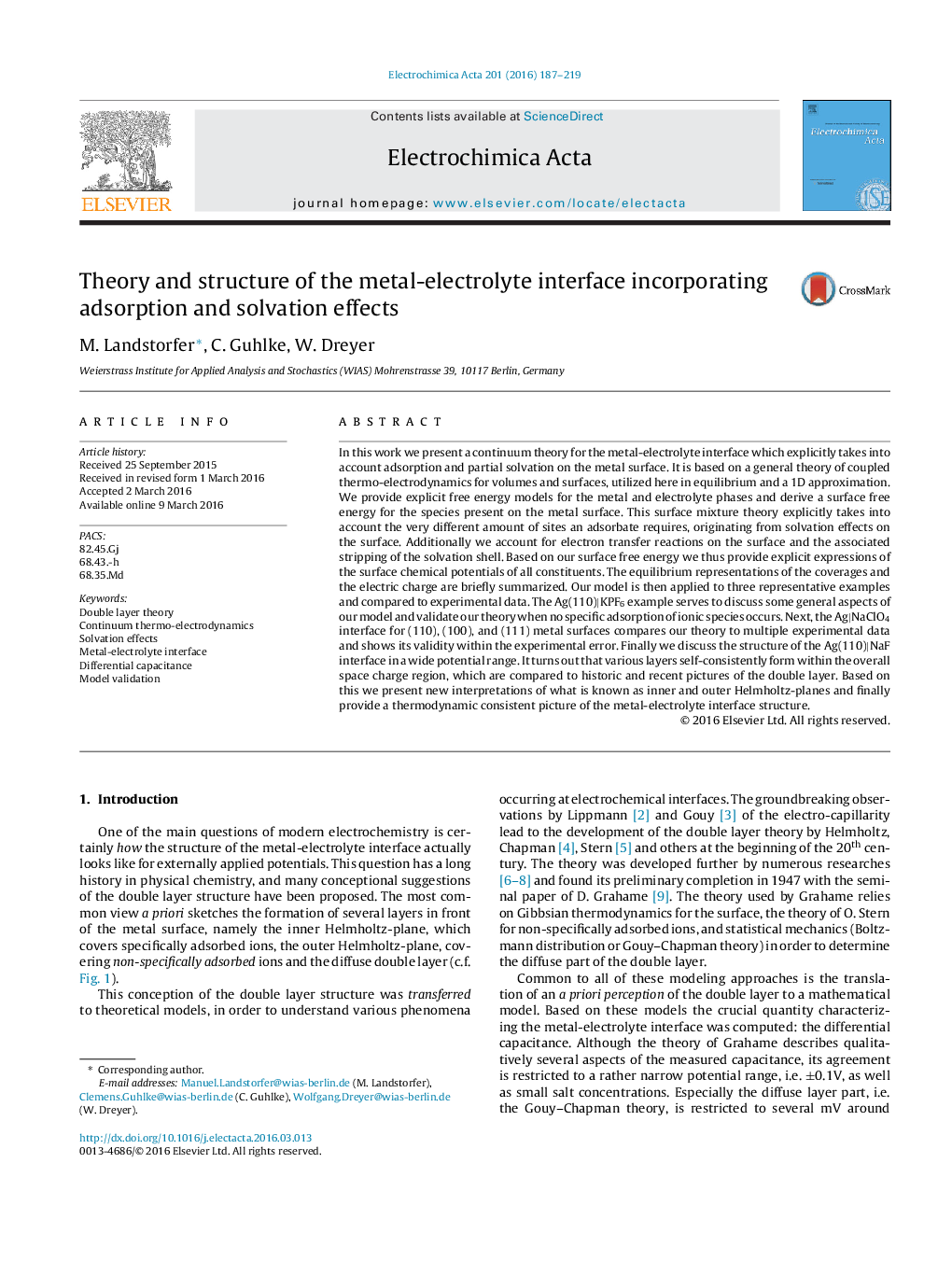| Article ID | Journal | Published Year | Pages | File Type |
|---|---|---|---|---|
| 6607597 | Electrochimica Acta | 2016 | 33 Pages |
Abstract
In this work we present a continuum theory for the metal-electrolyte interface which explicitly takes into account adsorption and partial solvation on the metal surface. It is based on a general theory of coupled thermo-electrodynamics for volumes and surfaces, utilized here in equilibrium and a 1D approximation. We provide explicit free energy models for the metal and electrolyte phases and derive a surface free energy for the species present on the metal surface. This surface mixture theory explicitly takes into account the very different amount of sites an adsorbate requires, originating from solvation effects on the surface. Additionally we account for electron transfer reactions on the surface and the associated stripping of the solvation shell. Based on our surface free energy we thus provide explicit expressions of the surface chemical potentials of all constituents. The equilibrium representations of the coverages and the electric charge are briefly summarized. Our model is then applied to three representative examples and compared to experimental data. The Ag(110)|KPF6 example serves to discuss some general aspects of our model and validate our theory when no specific adsorption of ionic species occurs. Next, the Ag|NaClO4 interface for (110), (100), and (111) metal surfaces compares our theory to multiple experimental data and shows its validity within the experimental error. Finally we discuss the structure of the Ag(110)|NaF interface in a wide potential range. It turns out that various layers self-consistently form within the overall space charge region, which are compared to historic and recent pictures of the double layer. Based on this we present new interpretations of what is known as inner and outer Helmholtz-planes and finally provide a thermodynamic consistent picture of the metal-electrolyte interface structure.
Keywords
Related Topics
Physical Sciences and Engineering
Chemical Engineering
Chemical Engineering (General)
Authors
M. Landstorfer, C. Guhlke, W. Dreyer,
